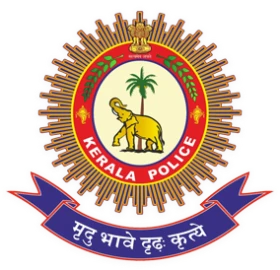- Emergency Helpline No. 112
- യോദ്ധാവ് 9995 966 666


വയനാട് പോലീസ്
കേരള പോലീസ്
ഗുഡ് വർക്ക്സ്
നേട്ടങ്ങളും അംഗികാരവും
വിവിധ ക്ഷേമ പ്രവര്ത്തനങ്ങള്.
ചരിത്രം
പ്രസിദ്ധീകരണങ്ങൾ
വിഭാഗങ്ങള്
ജനറല് എക്സിക്യൂട്ടീവ്
പോലീസ് സ്റ്റേഷനുകൾ
- കൽപ്പറ്റ പോലീസ് സ്റ്റേഷൻ
- മേപ്പാടി പോലീസ് സ്റ്റേഷൻ
- വൈത്തിരി പോലീസ് സ്റ്റേഷന്
- പടിഞ്ഞാറത്തറ പോലീസ് സ്റ്റേഷൻ
- കമ്പളക്കാട് പോലീസ് സ്റ്റേഷൻ
- മാനന്തവാടി പോലീസ് സ്റ്റേഷൻ
- പനമരം പോലീസ് സ്റ്റേഷൻ
- വെള്ളമുണ്ട പോലീസ് സ്റ്റേഷൻ
- തൊണ്ടർനാട് പോലീസ് സ്റ്റേഷൻ
- തലപ്പുഴ പോലീസ് സ്റ്റേഷൻ
- തിരുനെല്ലി പോലീസ് സ്റ്റേഷൻ
- സുൽത്താൻ ബത്തേരി പോലീസ് സ്റ്റേഷൻ
- അമ്പലവയൽ പോലീസ് സ്റ്റേഷൻ
- മീനങ്ങാടി പോലീസ് സ്റ്റേഷൻ.
- പുൽപ്പള്ളി പോലീസ് സ്റ്റേഷൻ
- കേണിച്ചിറ പോലീസ് സ്റ്റേഷൻ
- നൂൽപ്പുഴ പോലീസ് സ്റ്റേഷൻ
- സൈബർ പോലീസ് സ്റ്റേഷൻ വയനാട്
ഇതര സാങ്കേതിക വിഭാഗങ്ങള്
- വയനാട് ജില്ലാ പോലീസ്ആസ്ഥാനം
- ജില്ലാ സ്പെഷ്യല് ബ്രാഞ്ച്
- ജില്ലാ ക്രൈം റെക്കോർഡ്സ് ബ്യൂറോ
- ജില്ലാ ക്രൈംബ്രാഞ്ച്
- സ്പെഷ്യൽ മൊബൈൽ സ്ക്വാഡ്
- ജില്ലാ നാർക്കോട്ടിക് സെൽ
- ഹൈവേ പോലീസ് വിഭാഗം
- വനിത സെല്
- സൈബർ സെൽ
- പോലീസ് വാര്ത്താ വിനിമയ വിഭാഗം
- ഡോഗ് സ്ക്വാഡ് (കെ-9 സ്ക്വാഡ്)
- പോലീസ് ഫോട്ടോ ഗ്രാഫിക് വിഭാഗം
- ജില്ലാ ഫിംഗർപ്രിന്റ് ബ്യൂറോ
പൊതുവായ വിവരങ്ങള്
വിവരാവകാശ നിയമം അനുസ്സരിച്ച് പ്രസിദ്ധ പെടുത്തുന്ന വിവരങ്ങള്
- Police Districts
- Public Information authorities as per Section 5(1) of the Act
- Online facility to file applications under RTI Act
- Monthly Expenditure Statement
- Directory of officers/ Employees of the unit
- Details of Information available reduced in an electronic form
- Particulars of functions and details of each unit/office
- Particulars of public information facilities
- Monthly remuneration received by each officer of and above the rank of Sub-Inspector or equivalent
- Details of Subsidy Schemes
- Procedure followed in decision making process including Channels of supervision and accountability
- Details of extra arrangements for consultation from the member of public in relation with the formulation / implementation office policy
ഗാലറി
കുറ്റകൃത്യങ്ങളുടെ സ്ഥിതി വിവര കണക്കുകള്
- കുറ്റകൃത്യങ്ങളുടെ ആകെ സ്ഥിതി വിവര കണക്കുകള്
- ഐ .പി .സി വിഭാഗം
- എസ്. എൽ . എൽ വിഭാഗം
- കുട്ടികള്ക്ക് എതിരെയുള്ള കുറ്റകൃത്യങ്ങളുടെ സ്ഥിതി വിവര കണക്കുകള്
- സ്ത്രീകള്ക്ക് എതിരെയുള്ള കുറ്റകൃത്യങ്ങളുടെ സ്ഥിതി വിവര കണക്കുകള്
- SC ST Atrocities Act Cases
- Cyber Cases
- Suicide
- Missing Cases
- റോഡ് അപകടങ്ങളെ കുറിച്ചുള്ള സ്ഥിതി വിവര കണക്കുകള്.
- CrPC
- Protection of Children from Sexual Offences Act- പ്രകാരം ഉള്ള കേസുകളുടെ സ്ഥിതി വിവര കണക്കുകള്
പൊതു ജനങ്ങള്ക്കുള്ള മാര്ഗ നിര്ദ്ദേശങ്ങള്
- ഇന്റര്നെറ്റ് ഉപയോഗിക്കുമ്പോള് ശ്രദ്ധിക്കേണ്ട സുരക്ഷാ മാനദണ്ഡങ്ങള്
- പൊതു ജനങ്ങള് ഓണ്ലൈന് ആയി ബാങ്ക് ഇടപാട് നടത്തുമ്പോള് ശ്രദ്ധിക്കേണ്ട കാര്യങ്ങള്
- സൈബർ സെക്യൂരിറ്റി ടിപ്സ്
- കുറ്റകൃത്യം തടയുന്നതിന് വേണ്ടി ശ്രദ്ധിക്കേണ്ട കാര്യങ്ങള്
- ഗതാഗത നിയന്ത്രണ അറിയിപ്പുകള്
- പോലീസ് ക്ലീയറന്സ് ലഭിക്കുന്നതിന് വേണ്ടി ഉള്ള മാര്ഗ നിര്ദ്ദേശങ്ങള്
- വിരലടയാള വിഭാഗത്തിന്റെ സേവനം ലഭിക്കുന്നതിനുള്ള മാര്ഗ നിര്ദ്ദേശങ്ങള്
- പൊതുവായി ആവശ്യപെടാന് സാധ്യതയുള്ള ചോദ്യങ്ങള്
- പൌരാവകാശ രേഖ (Citizen Charter)
- ബോധിനി - കുട്ടികളുടെ സുരക്ഷിതത്വം സംബന്ധിച്ച്
ഡൗൺലോഡ്





